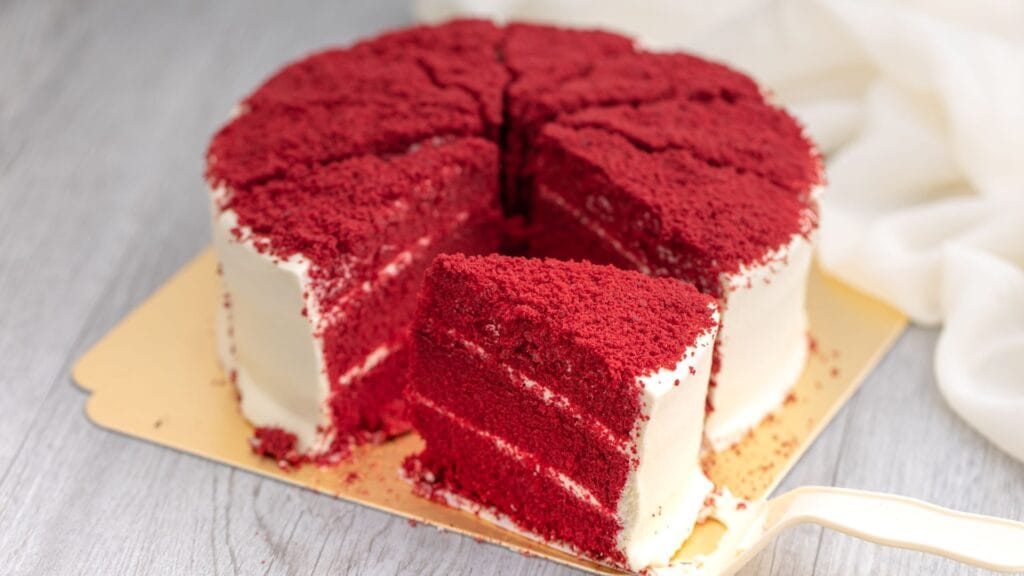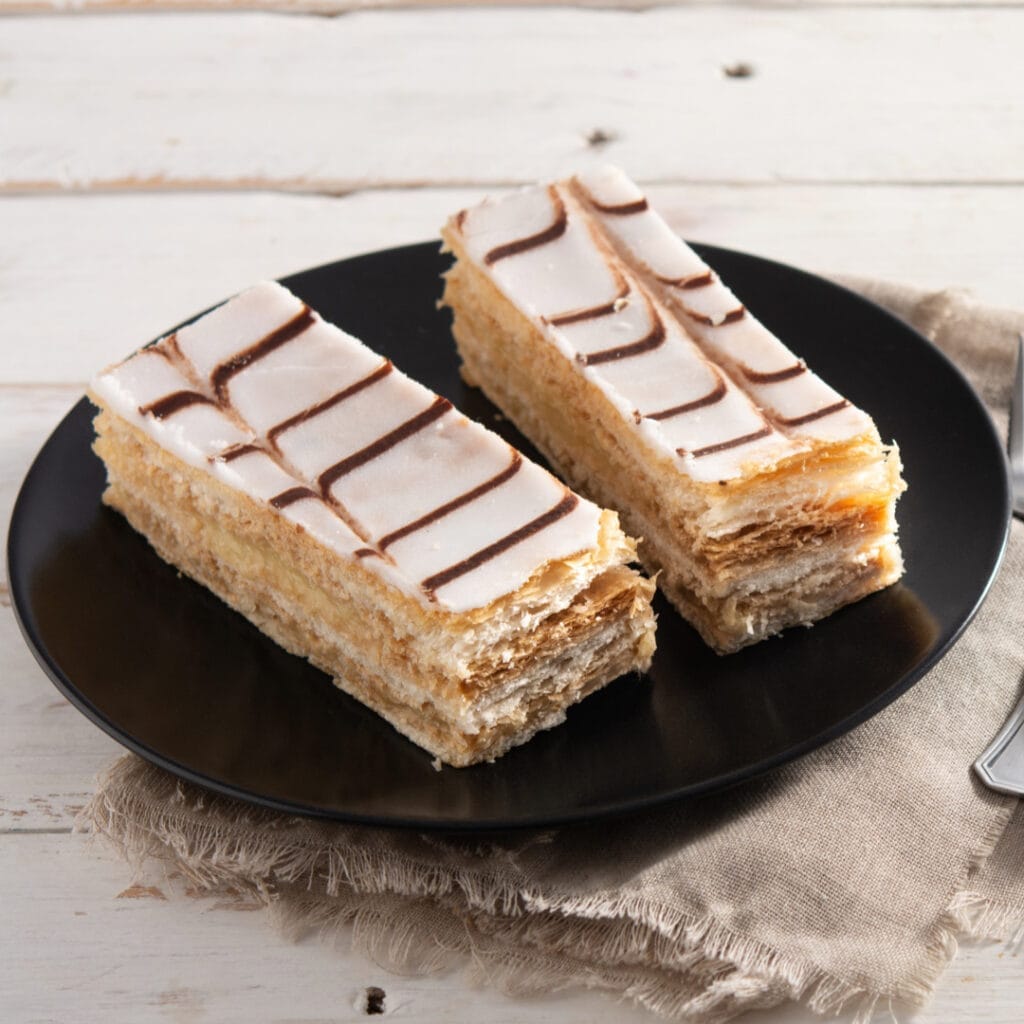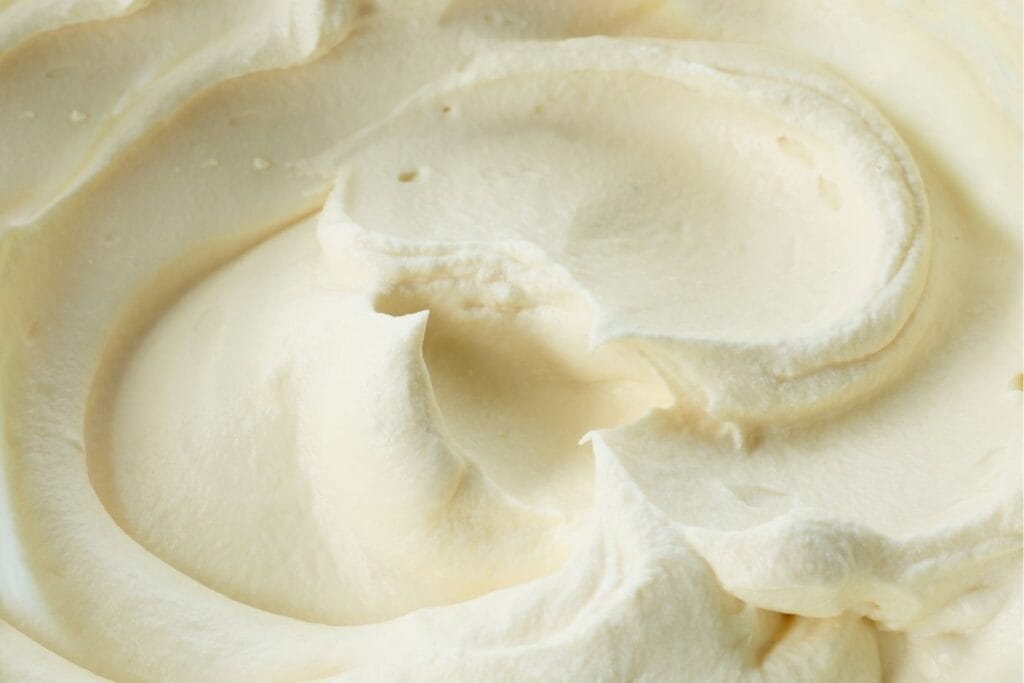What exactly is red velvet cake, and why is it red?
Many believe red velvet cake is nothing more than chocolate cake dyed red, but that couldn’t be further from the truth. This striking, cocoa-infused dessert holds a special place in the world of baking. But what is it, and why does it have that distinct crimson hue? Let’s uncover the rich history, flavor profile, and unique ingredients behind red velvet cake.
Where Did Red Velvet Cake Originate?
To fully understand red velvet cake, we must take a trip back to the Victorian era. During this period (approximately 1837 to 1901), bakers began crafting “velvet cakes” using ingredients and methods that resulted in a fine, tender crumb and luxuriously soft texture. Almond flour, cornstarch, and cocoa powder were commonly used, as were acidic ingredients like buttermilk and vinegar, which helped tenderize the cake.
A remarkable observation occurred when bakers combined raw cocoa powder (which contains natural antioxidants called anthocyanins) with acidic ingredients like vinegar or buttermilk. This chemical reaction produced a subtle reddish-brown hue in the cake batter, resulting in a dessert known as “mahogany cake.” This cake, with its light chocolate flavor and soft texture, laid the foundation for what would eventually become red velvet cake.
How Did Red Velvet Cake Gain Popularity?
During the early 1900s, a blend of mahogany cake and devil’s food cake gave rise to what became known as “velvet cocoa cake.” This cake was popular in households across the United States because cocoa powder was more affordable than chocolate, making the dessert more accessible during hard economic times, particularly the Great Depression.
By the 1930s, velvet cocoa cake had earned a new name—red velvet cake. This transformation happened in part due to the Waldorf-Astoria Hotel in New York City, which added red velvet cake to its prestigious menu. Around the same time, Eaton’s Department Store in Canada also began offering red velvet cake to their customers. Although both establishments claimed credit for popularizing the dessert, its roots were firmly grounded in home kitchens long before it appeared on restaurant menus.
Why Is Red Velvet Cake So Vibrant Today?
In the late 1930s, PMF Extract Co. recognized an opportunity when the FDA adjusted regulations around color additives. The company began mass-producing red food dye, promoting it through a red velvet cake recipe included with their dye packages. This innovation led to the intensely vibrant red velvet cake known today, contrasting beautifully with creamy white frosting.
Additionally, a shift occurred in the cocoa industry. Manufacturers began producing Dutch-processed cocoa powder, which is treated with an alkalizing agent that prevents the natural color reaction between cocoa and acidic ingredients. As a result, bakers increasingly relied on food dye to maintain the iconic red appearance of the cake.
What Ingredients Create the Classic Red Velvet Flavor?
Modern red velvet cake recipes typically include Dutch-processed cocoa powder, butter, sugar, eggs, flour, baking soda, buttermilk, vinegar, and red food coloring. Some creative bakers turn to natural alternatives like beet juice, pomegranate powder, or cranberry powder to achieve a more subtle red hue. While these natural versions are less vibrant than the fire-engine-red cakes made with dye, they maintain a similar taste and texture.
How Does Red Velvet Cake Taste?
Red velvet cake offers a delicate balance between chocolate and vanilla flavors, with a hint of tartness from the buttermilk and vinegar. This combination gives the cake a uniquely tangy edge, setting it apart from richer, denser chocolate cakes. It falls somewhere between a classic white cake and a chocolate cake in terms of flavor intensity.
What Makes Red Velvet Cake Different from Chocolate Cake?
The primary differences between red velvet cake and chocolate cake lie in the ingredients and flavor profiles. Red velvet cake contains buttermilk and vinegar, which add a light tang and contribute to its soft, airy texture. By contrast, chocolate cake often lacks these acidic components, resulting in a denser, more intensely chocolatey dessert. Additionally, while chocolate cake relies heavily on cocoa or melted chocolate, red velvet cake uses a smaller amount of cocoa, allowing other flavors to shine.
What Frosting Pairs Best with Red Velvet Cake?
Cream cheese frosting is the traditional companion for red velvet cake. The rich, slightly tangy flavor of the frosting perfectly complements the cake’s subtle chocolate notes and tartness. Some bakers opt for buttercream frosting, which adds sweetness without overpowering the cake’s flavor profile.
Frequently Asked Questions
What makes red velvet cake red?
Today, most red velvet cakes owe their vibrant color to red food dye. Historically, the reddish hue resulted from the reaction between acidic ingredients (such as buttermilk and vinegar) and raw cocoa powder.
Is red velvet cake the same as chocolate cake?
Although red velvet cake contains cocoa powder, it is not simply chocolate cake with red dye. The inclusion of buttermilk and vinegar in red velvet cake creates a lighter texture and tangier flavor compared to the richer, denser profile of chocolate cake.
What type of frosting complements red velvet cake best?
Cream cheese frosting is the classic choice for red velvet cake, offering a creamy, tangy contrast to the cake’s subtle chocolate flavor. Buttercream frosting is another popular option.



